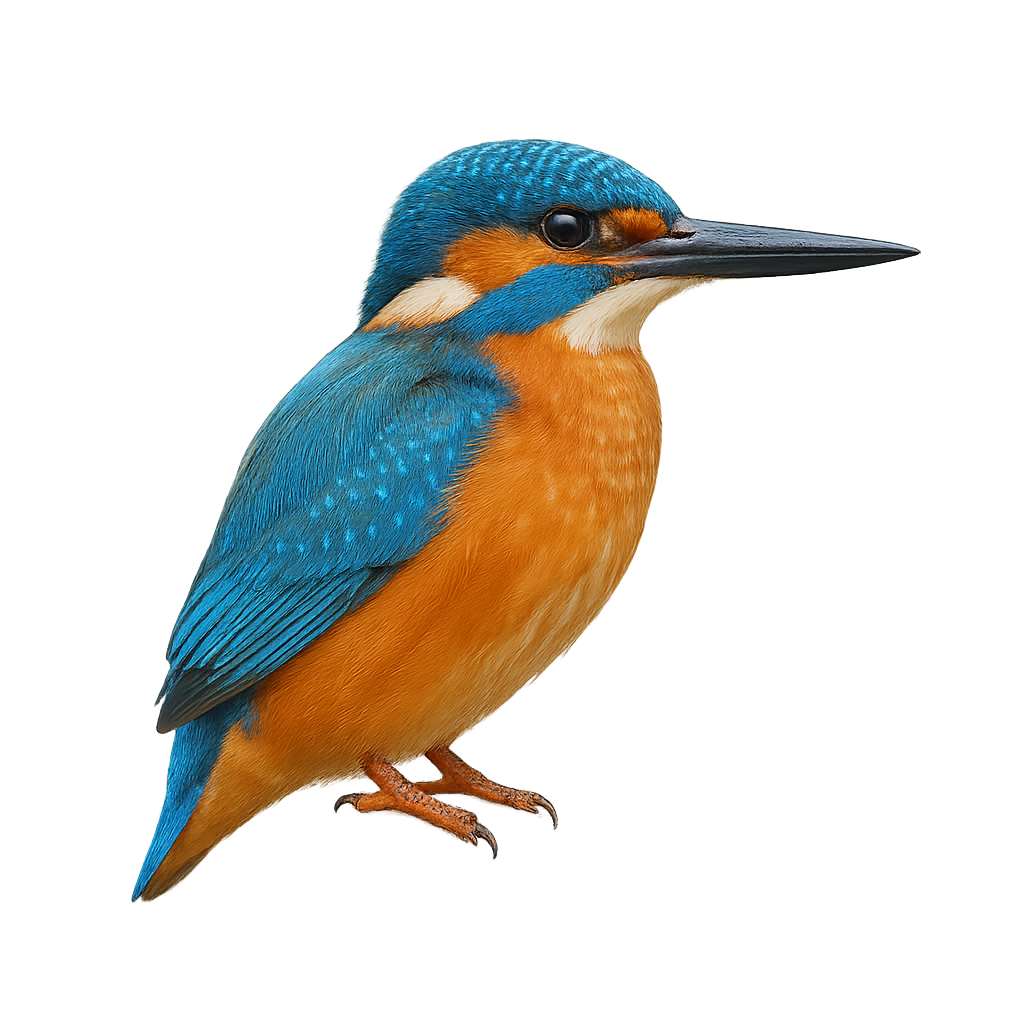Observe and photograph a species in its natural habitat
Learn where and when to observe a species in the wild, how to recognize it in the field, and what habitats it lives in. Get photography tips adapted to its behavior and capture stunning images without disturbing the animal. For full details, open the complete profile in the WildlifePhotographer app.
European Kingfisher
Scientific name: Alcedo atthis

IUCN Status: Least Concern
Family: ALCEDINIDAE
Group: Birds
Shyness: Suspicious
Safe distance: 20 m
Breeding season / Courtship: 01.03-31.03
Gestation: 19 à 21 jours
Births: 20.04-21.05
Habitat:
Rivers, lakes, and wetlands
Description:
The European Kingfisher is a small aquatic bird, easily recognized by its vivid plumage and bright colors. It measures about 17 to 19 cm in length and weighs between 30 and 40 g. Its back is a brilliant metallic blue, while its belly is a bright orange. Its bill is long, straight, and pointed, perfectly suited for catching fish and aquatic insects. This kingfisher primarily lives along rivers, lakes, and canals in Europe, where it perches on branches or rocks near the water. When hunting, it dives quickly in a headfirst plunge to capture its prey, often using its excellent vision to locate fish underwater. The European Kingfisher is a solitary bird, defending its territory by emitting a sharp call. While it is relatively common in many parts of Europe, it can be threatened by water pollution and habitat destruction.
Recommended lens:
>=400 mm
Photography tips:
Approach slowly and discreetly, as the European Kingfisher is a very sensitive bird and can easily fly away if you get too close too quickly.
Photograph early in the morning or late in the day, when the light is softer and the bird is more active, especially when it is hunting for food near rivers or lakes.
Capture the diving moment: The Kingfisher is famous for its ability to dive quickly into the water to catch fish. Be ready to capture this spectacular moment.
Be patient: The Kingfisher often perches on branches or rocks near the water. Wait calmly for it to land or dive for a natural shot.
The European Kingfisher is a protected species, sensitive to disturbances at its nesting and feeding sites. Respect its space and do not disturb its natural habits. Follow local conservation rules to protect this fragile species, especially during the breeding season.
Ready to take action?
Choose your platform and start your free trial today



